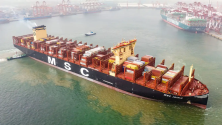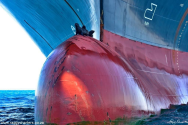Just how big was the ship that struck the Key Bridge?
This graphic from the Associated Press offers a stark visualization of the size of the ship that hit the Key Bridge on Tuesday, causing it to collapse.
Follow along for live updates after a container ship crashed into the Francis Scott Key Bridge.

news.yahoo.com
Could fenders have prevented the bridge collapse?
When it comes to bridge engineering, protective barriers can help redirect or prevent a ship from crashing into the bridge's supports.
The New York Times reports that the Francis Scott Key Bridge, which collapsed on Tuesday, did not appear to have an "obvious fender system."
Some engineers told the Times that the collapse might have been prevented if it had more effective barriers in place. This could be anything from pyramids of rocks to padded concrete rings surrounding the supports.



